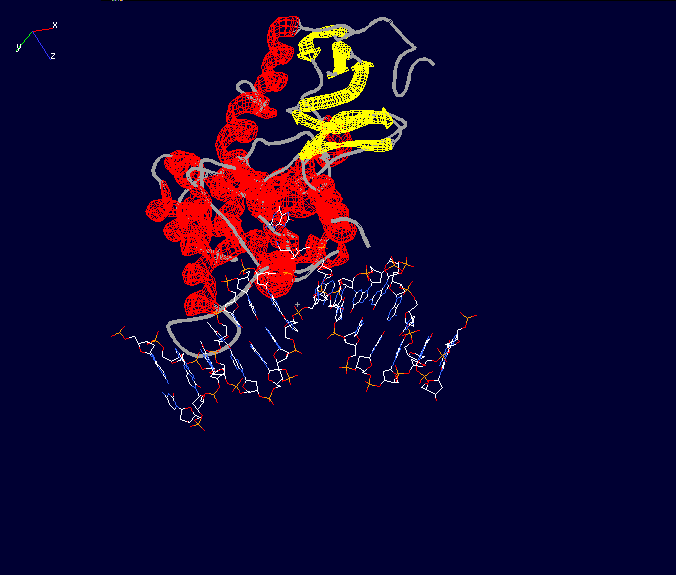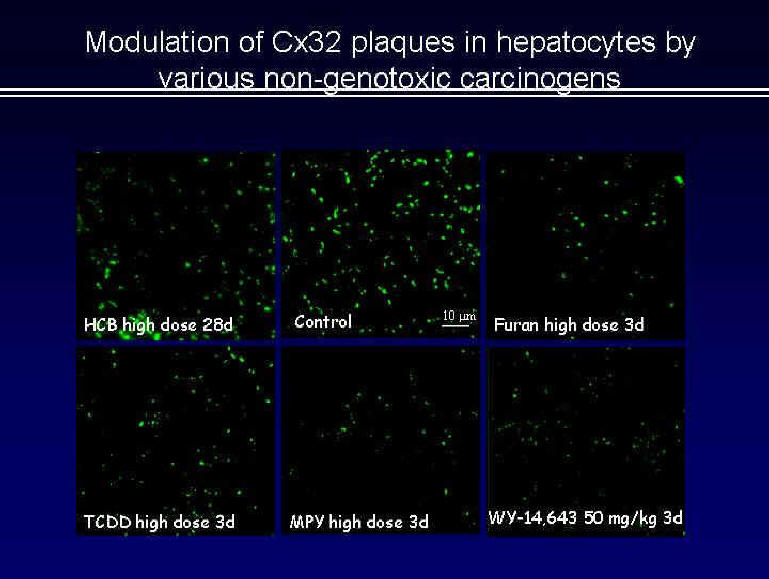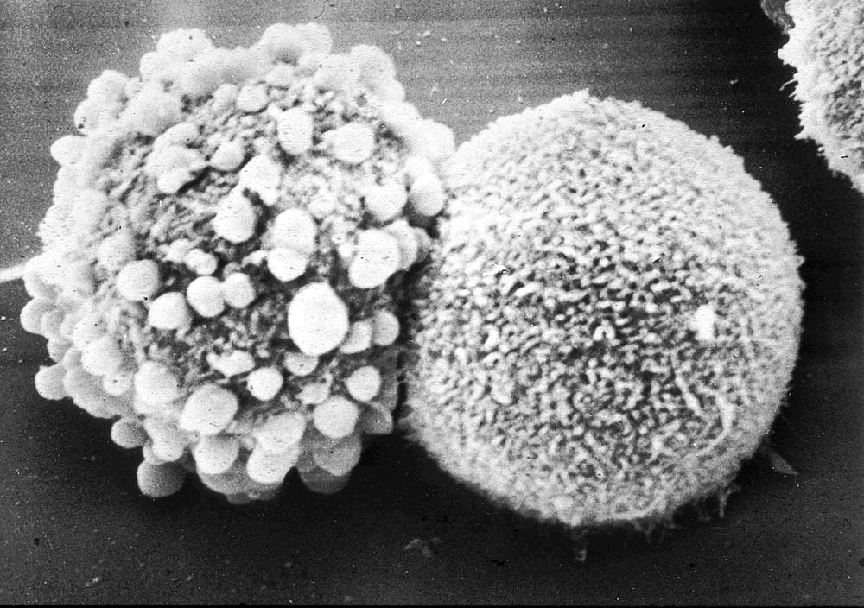A number of our projects investigate the mechanisms whereby chemicals (such as chromium) damage DNA or alter expression of genes involved in cellular protection. We are investigating susceptibility factors including polymorphisms in DNA repair enzymes.

We have shown a heterocyclic amine carcinogen to be activated to DNA-damaging products by heterologously expressed human cytochrome P4501A2 illustrating human susceptibility. Potent protectants such as dietary isoflavonoids and sulforaphane have been shown to modulate P450 and inhibit proliferation and DNA oxidation. Genomic DNA damage due to the action of genotoxic agents may be measured by Comet analysis, and by postlabelling of DNA adducts


| Comet image showing severe DNA fragmentation and migration from the nucleus and into the surrounding agarose, producing the characteristic comet 'tail' | Comet image of a hepatocyte displaying very little DNA fragmentation. |
A range of projects investigates
the balance between proliferation and apoptosis, with a particular
emphasis on changes in gene expression through the use of
immunohistchemistry, RT-PCR and cDNA arrays. In particular, connexin-mediated
gap junctional intercellular communication restrains uncontrolled
proliferation and provides a tumour suppressor action. We have found
that a rodent non-genotoxic hepatocarcinogen causes connexin 32
phosphorylation and inhibits communication in association with
mitogenesis and inhibition of apoptosis.
As well as developing a reporter assay for determining alterations of
expression of connexin 32, we have also employed a novel, ex vivo
incision-load technique which allows the rapid assessment of
intercellular communication following in vivo chemical exposure.
The extent of gap-junction mediated dye transfer between hepatocytes can
be quantified by image analysis.
|
|
|
Hepatocyte couplets showing cellular damage in one cell only and representing the closure of gap junctions |
|
|

